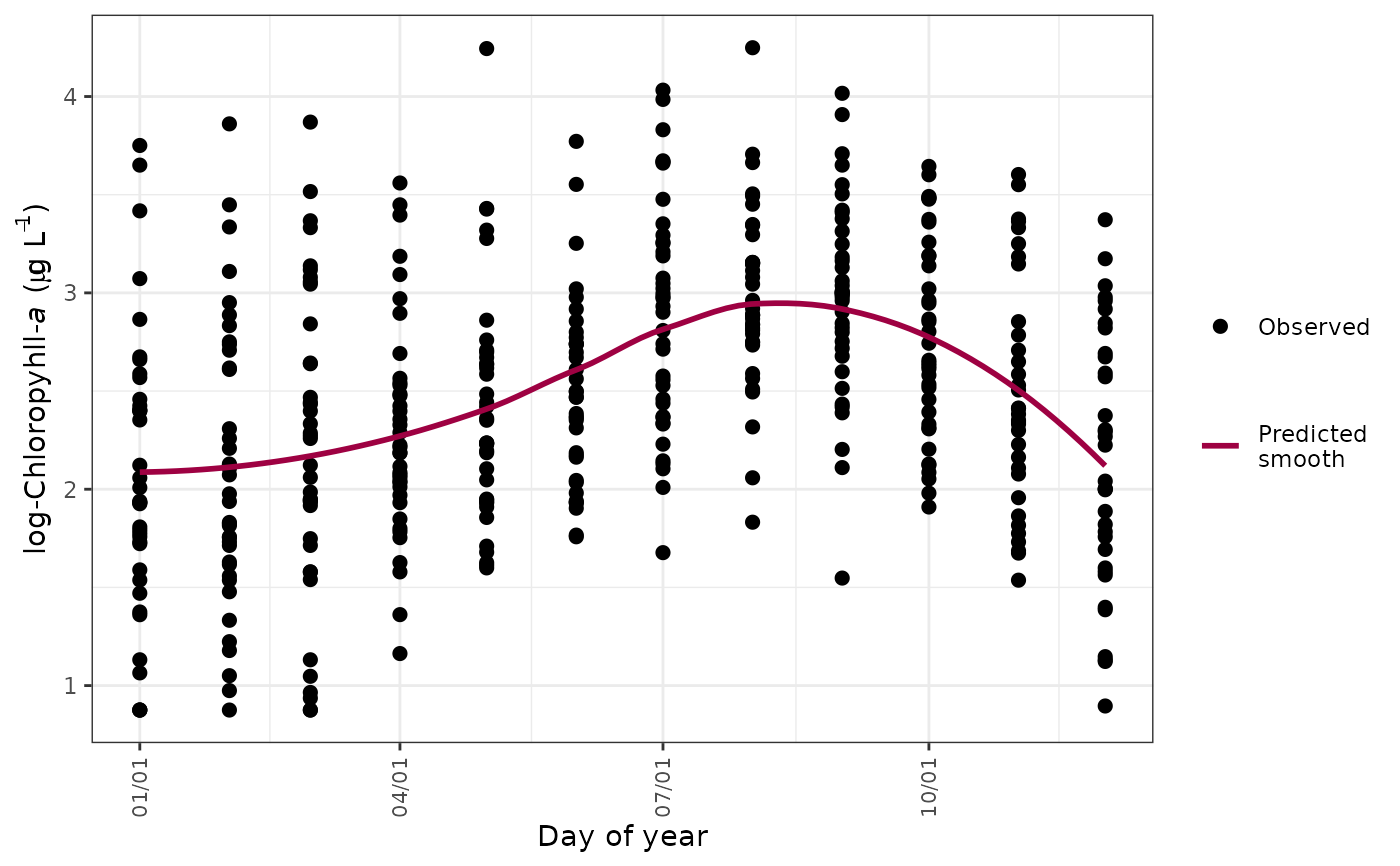Plot seasonal trends by combining annual data
seasplot(dat_in, ...)
# S3 method for tidal
seasplot(
dat_in,
tau = NULL,
predicted = TRUE,
span = 0.4,
lwd = 1,
size = 2,
alpha = 1,
col_vec = NULL,
grids = TRUE,
logspace = TRUE,
...
)
# S3 method for tidalmean
seasplot(
dat_in,
predicted = TRUE,
span = 0.4,
lwd = 1,
size = 2,
alpha = 1,
col_vec = NULL,
grids = TRUE,
logspace = TRUE,
...
)Arguments
- dat_in
Input data object
- ...
arguments passed to other methods
- tau
numeric of quantile to plot
- predicted
logical indicating if seasonal smooth is based on model predictions, default
TRUE, otherwise the smooth is based on flow-normalized predictions- span
numeric indicating the smoothing parameter for the loess fit, passed to
stat_smooth- lwd
numeric value indicating width of lines
- size
numeric value indicating size of points
- alpha
numeric value indicating transparency of points or lines
- col_vec
chr string of plot colors to use, passed to
gradcols. Any color palette from RColorBrewer can be used as a named input. Palettes from grDevices must be supplied as the returned string of colors for each palette.- grids
logical indicating if grid lines are present
- logspace
logical indicating if plots are in log space
Details
Seasonal variation across all years can be viewed by showing the observed annual data on a common y-axis. The year value is removed from the results such that the y-axis shows only the day of the year. A simple loess (locally estimated) polynomial smooth is added to show the seasonal trend in the results, where the smoother is fit through the model results for the observed data. The fit can be smoothed through the model predictions or the flow-normalized predictions, neither of which are shown on the plot.
See also
Examples
# load a fitted tidal object
data(tidfit)
# plot using defaults
# defaults to all quantiles for tidal object
seasplot(tidfit)
#> `geom_smooth()` using method = 'loess' and formula = 'y ~ x'
#> Warning: Removed 10 rows containing non-finite values (`stat_smooth()`).
 # tidalmean object
seasplot(tidfitmean)
#> `geom_smooth()` using method = 'loess' and formula = 'y ~ x'
# tidalmean object
seasplot(tidfitmean)
#> `geom_smooth()` using method = 'loess' and formula = 'y ~ x'
